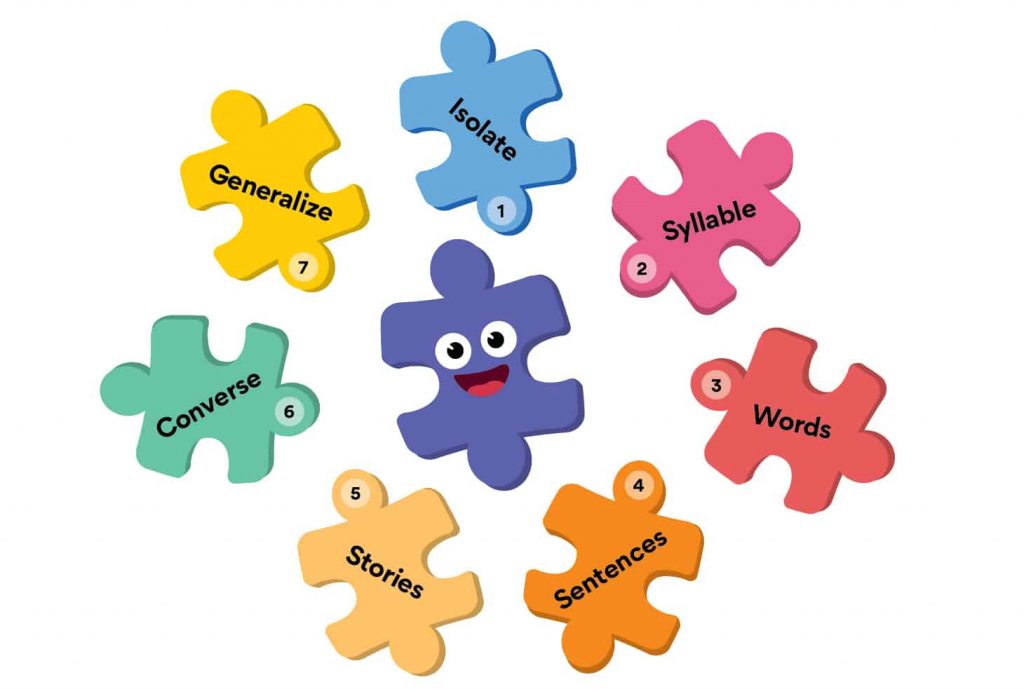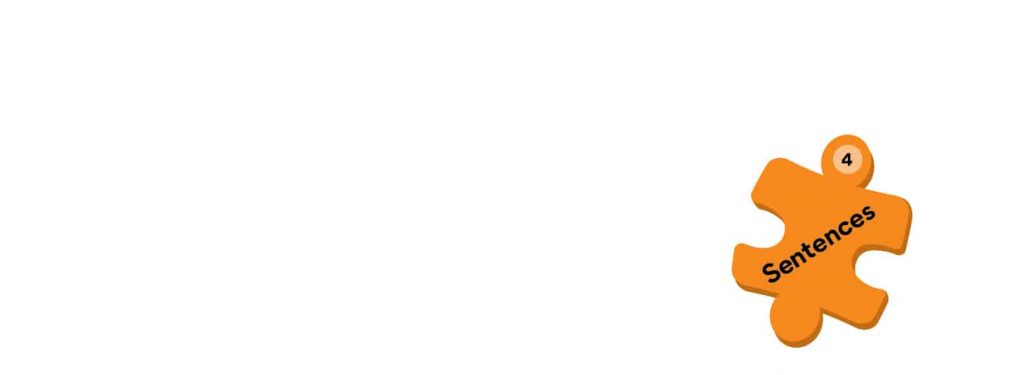7 Steps of Articulation Therapy
Jan 17, 2022 Articulation, in short, is the ability of a child to correctly formulate and produce different phonemes (sounds). Sounds easy, right? Well, it’s actually not!
In This Article
If your child has a speech problem, you probably don’t wonder about the specific mechanics of their speech sounds. There’s a lot that goes into making the simple ‘t’ sound. Your tongue has to move to the roof of your mouth, you don’t activate your vocal fold, and you have to simultaneously blow air out of your mouth to create the actual sound. It’s a process which has breakdowns for a variety of reasons, which is why there is articulation therapy. Therapy focuses on correcting the sounds that your child cannot produce correctly or clearly, or the ‘articulation disorder.’
If your child has difficulties with certain sounds, (s)he may have an articulation disorder. Here are some articles that can help you with speech therapy and articulation activities ideas. To help you practice, download the Speech Blubs App.
- Articulation Therapy: An All-in-One Guide for Parents
- B Sound Articulation Therapy
- H Sound Articulation Therapy
- JJ and CH Sounds Articulation Therapy
- L Sound Articulation Therapy
- Lisp Articulation Therapy
- M Sound Articulation Therapy
- N Sound Articulation Therapy
- NG Sound Articulation Therapy
- R Sound Articulation Therapy
- S Sound Articulation Therapy
- SH Sound Articulation Therapy
- T and D Sounds Articulation Therapy
- W Sound Articulation Therapy
Boost Your Child’s Speech Development!
Improve language & communication skills with fun learning!

Articulation Disorders: First Things First . . .
The first thing that needs to happen is for the Speech-Language Pathologist (SLP) to determine which sounds your child cannot produce correctly, or in other words, which articulation disorder they have.
As a parent, I’m sure you could listen to your child’s speech right now and write down sounds that aren’t coming out as they should. That said, there are certain sounds that kids don’t produced until as late as age 5 (‘R’), so it’s also important to realize that certain speech errors are normal.

SLPs perform a language screening on your child to determine not only which sounds need to be focused on, but also in which word position the errors occur (beginning, middle, or end).
- In addition, what speech patterns are occurring?
- Are they substituting the sound with a different one?
- Do they attempt to produce it, but the sound is distorted or unclear?
- Are they deleting the sound completely?
An SLP will also tell you how your child is doing compared to other children his/her age, and which sounds are developing typically.
7 Steps of Articulation Therapy
Step 1: Isolate

Step one in dealing with an articulation disorder is the process of isolation, which is exactly what it sounds like; isolating the sound that is causing difficulty for the child. For example, if the child is having issues with producing the ‘th’ sound, the SLP will start with activities that isolate that single sound. The child repeats the /th/, /th/, /th/ sound over and over again until they meet a certain accuracy level. Once reached, they will move on to the next level of therapy.
Step 2: Syllable

Practicing a sound in syllable form is done by adding a vowel in front or behind the main sound. For example, if we were focusing on the ‘s’ sound, adding the vowel would make the sounds ‘sa,’ ‘so,’ ‘si,’ ‘se.’ If the target sound was ‘p,’ then putting the vowel in front of the target would look like, ‘up,’ ‘ap,’ ‘op.’
Step 3: Words

After the child masters the syllable level, you can move the child up to the words level. This is just putting the sound in any word, in the correct position. For example, if we were targeting the /t/ sound in the initial position, we would give the child words to repeat such as ‘top,’ ‘tongue,’ ‘two,’ or ‘toe.’ If we were targeting the final position, we could include words such as, ‘cat,” ‘bat,’ ‘coat,’ ‘sit.’
Step 4: Sentences

Once your child places a word into a sentence, your child is halfway through the goals of articulation therapy! Yay!
You can place any word with the targeted phoneme into the sentence. Use as many of the targeted sounds as you can. For example, “The pretty pink elephant has purple carrots.”
Step 5: Stories

This is not a typical step in articulation therapy; however, I am including it because it is a good step to use with older children (middle and high school). You can have older children write their stories and add as many of the specific sounds as possible. Have them read the stories aloud and ask them to repeat any words that they didn’t say clearly or accurately.
Step 6: Conversation

The conversation step in therapy is much easier to tackle outside of the therapy room. You may see your child’s therapist rotating specific topics or showing cards, and having a conversation about them. At home, you just have normal discussions with your child and can monitor consistency and carryover of articulation. If you are consistently hearing errors, you should tell the speech pathologist in case scaling back to the sentence level is necessary.
Step 7: Generalization

Generalization is the last step in articulation therapy! Once your child has mastered the sound(s) at the word, sentence, and conversation levels, they are ready to move over to generalization. This step is where you ensure your child is speaking clearly and articulately across all areas (e.g. at the playground, at the movies, in the car). If not, the therapist may choose to scale back to the conversation or sentence level!
Download Speech Blubs App for more articulation therapy ideas and concepts that will give you more information. If you have any concerns, please see a Speech-Language Pathologist as soon as possible to determine if services are warranted!